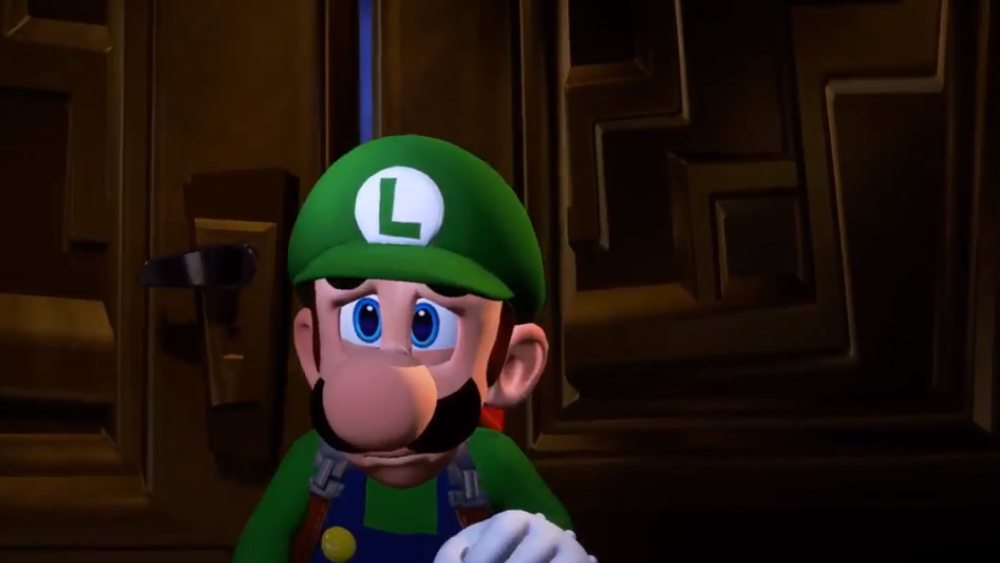
When I was a teenager, I finally chose to move away from the only gaming company I’d ever known growing up. Nintendo no longer seemed cool anymore with the announcement of the GameCube, a console that looked even more toy-like than its predecessor the Nintendo 64. While I would probably say that the PlayStation 2 rivals my love for the Nintendo 64 concerning the best console of all-time, this also meant that I missed a massive glut of classic GC titles, including one Luigi’s Mansion. Upon hearing the announcement that this contemporary favourite was getting a re-release on the 3DS, I rubbed my hands together like a child about to pinch a cookie from the jar. I was excited to see how the ugly stepchild of Nintendo faired in his first solo game, as well as how the game holds up after 16 years.
Receiving word that he has won a mansion in a contest he didn’t enter, Luigi informs his brother Mario about this turn of good fortune, and the two plan to meet at the mansion. Equipping himself with a flashlight and map, Luigi sets out to meet his brother at his new accommodations. Unsurprisingly, things go awry, as it often does for the brothers Mario. Upon arriving at the mansion, Luigi encounters a Golden Boo before narrowly being saved by a vacuum-wielding scientist named Professor E. Gadd. After learning from the Prof that the mansion is indeed made up of supernatural properties, Luigi pairs with the eccentric scientist to help him rebuild his collection of ghost paintings and also save his brother at the same time from the clutches of the evil King Boo.

As is expected of Nintendo stories, the narrative details of Luigi’s Mansion are pretty scant and loosely slapped together. However, at the same time, it’s a lot more detail than other games have received and provides a convenient enough backdrop for the game’s gameplay and design merits to do their work while not being utterly devoid of substance. I’ve always been a huge fan of Luigi, and I also love that both of the Mansion’s games have taken more of a left of centre approach to storytelling than the traditional mainline titles. While his brother Mario is bold and fearless, Luigi is timid and anxiety-ridden – often playing the perfect foil to the zany and oddball Professor E. Gadd and also offering a refreshing take on the Mario universe.
The game is broken up into four primary levels, which are separated intermittently by trips back to the Professor’s lab. Due to the emphasis placed on discovery while you traverse the mansion, a central focus of the game’s design plays around the Game Boy Horror and its gameplay supplementation. The GBH allows you to view a map of the mansion covering rooms that you’ve already visited as well as indicating doors you’re able to unlock with keys you collect during play. It also helps in capturing the 50 Boo’s littered throughout the mansion by noting whenever you’re close to revealing one in a possessed room and handily keeps track of all the treasure that you’ve collected along the way. The game is perhaps worthy of criticism for being quite short in length, clocking in at around 6 hours for the average player. Given the nature of the game, though, in its limited confines, this is more than adequate in both providing something unique from the usual Mario gameplay while also not overstaying its welcome with unnecessary content.

Equipped with your flashlight and the Poltergust 3000 designed by Prof E. Gadd, the challenge of each level is to collect the ghosts that are haunting the mansion. This is done in a number of ways, both utilising the flashlight as well as various elemental medallions which you collect throughout the game. Paired together, these help you to capture ghosts by revealing their hearts and steadily reducing their hitpoint tally to zero. In doing this, the main sticking point is that you must artfully guide yourself and the ghost around the room without colliding into other enemies or the environment which interrupts the ghost capturing. Once a room has been cleared of portrait or boss ghosts, the room lights up and the music changes to indicate that this particular area is complete. There also appears to have been little to no difficulty in porting the title to the 3DS, with the functionality and gameplay being generally smooth from start to finish. For those who have a friend (unlike me), you can play cooperatively together with the second player taking control of Gooigi, a big, gelatinous fully green version of Luigi.
As usual, the graphics are quintessentially Nintendo while also managing to change things up a bit by working with a far darker colour scheme than you would traditionally associate with a Mario game. The graphics also include the implementation of stereoscopic 3D, while also providing amiibo functionality for those who have the required equipment. The soundtrack for Luigi’s Mansion is tailor-made to perfection, adding vibrant life to Luigi’s Mansion with the master touch provided by Shinobu Tanaka and long-time Nintendo maestro Kazumi Totaka.

The re-release of Luigi’s Mansion provides the perfect platform for fans who’re looking to re-engage with the series before the tentatively titled “Luigi’s Mansion 3” releases on the Nintendo Switch next year. It was also a fantastic throwback to the early 2000s for a 30-year-old kid who made the error of straying from the path of N, and I relished every second playing this GameCube classic and will continue to cherish the series as a Luigi diehard. All I can say is put your money where your mouth is, and back the guy in green!











